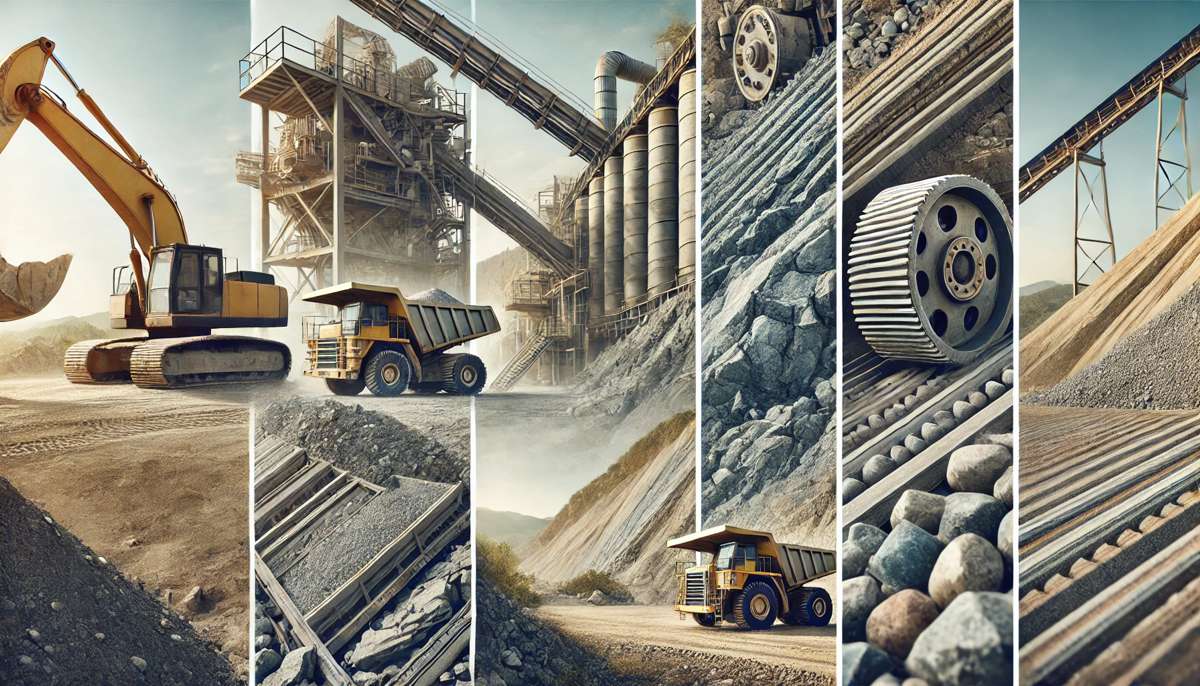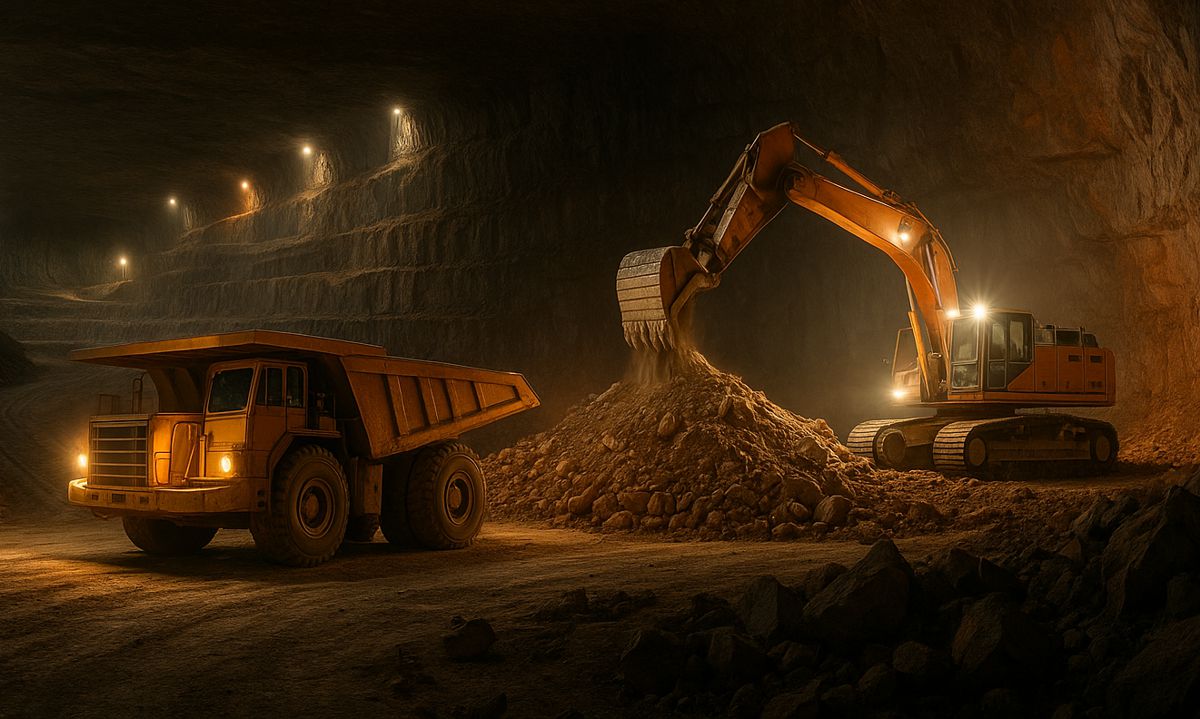Exploring the Foundations of Modern Quarrying
Quarries are essential to the construction, infrastructure, and industrial sectors, providing the raw materials that form the backbone of modern civilization.
This detailed guide examines the complexities of quarrying, including the types of materials extracted, equipment and methods employed, regulatory frameworks, and environmental considerations.
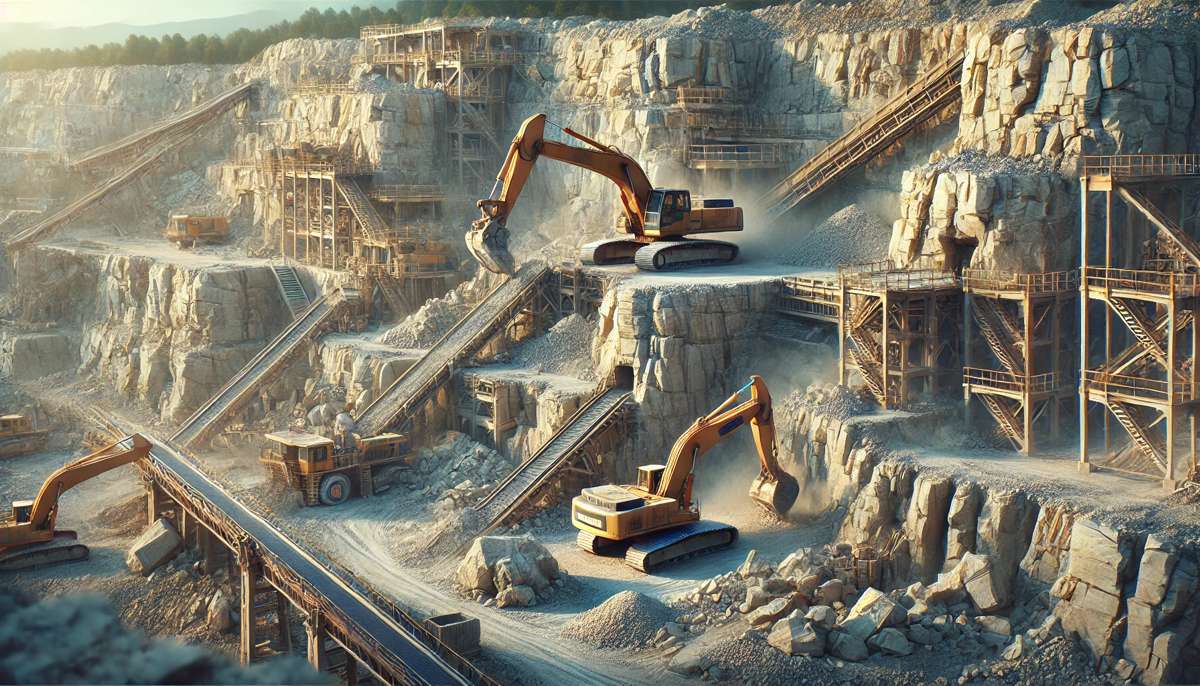
Understanding Quarries
A quarry is an open-pit excavation where natural resources such as rock, sand, gravel, and minerals are extracted. Unlike subterranean mining operations, quarries operate on or near the Earth’s surface. They are vital for producing materials used in construction projects, infrastructure development, and various industrial applications.
The importance of quarries cannot be overstated. Materials from these sites are used in roads, bridges, buildings, and more. By ensuring proximity to areas of high demand, quarries minimize transportation costs and environmental impacts associated with long-distance material hauling. These operations also support regional economies by providing jobs and fostering local development.
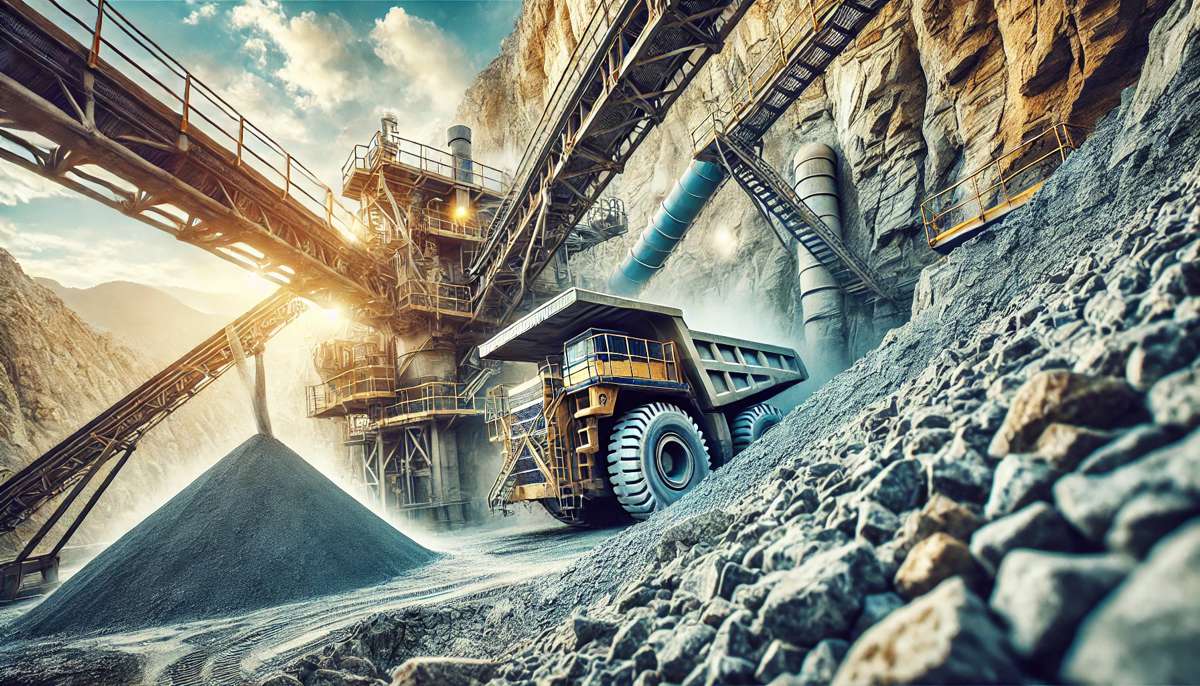
Materials Extracted from Quarries
Aggregates: The Backbone of Construction
Aggregates, which include crushed stone, gravel, and sand, are indispensable in construction. Crushed stone forms the base for roads and railways, gravel is used in concrete mixtures, and sand is essential for producing cement and mortar.
Limestone is a particularly common choice for aggregates due to its abundance and versatility. Granite, known for its durability and compressive strength, is frequently used in high-load applications like highway construction. Basalt, with its excellent thermal and mechanical properties, is increasingly used in producing high-performance concrete.
Dimension Stones: Natural Beauty for Architecture
Dimension stones are large blocks of natural rock cut into specific sizes for decorative or architectural purposes. Marble is highly prized for its luxurious appearance and is a staple in high-end interiors and sculptures. Granite, often polished for countertops or flooring, is valued for its durability and aesthetic appeal. Slate, with its fine-grained structure, is popular for roofing, cladding, and flooring. Sandstone, characterized by its warm tones and easy workability, remains a preferred choice for outdoor paving and walls.
Quarrying dimension stones requires precision and care to preserve the integrity of the rock. Advanced cutting techniques, such as wire sawing, ensure minimal waste and high-quality yields.
Industrial Minerals: Beyond Construction
Industrial minerals extracted from quarries have diverse applications. Gypsum is a primary ingredient in plaster and drywall, crucial for interior construction. Silica sand plays a significant role in manufacturing glass, ceramics, and as a proppant in hydraulic fracturing. Kaolin, a fine clay, is vital in producing ceramics, paper, and even pharmaceuticals.
These materials often require high levels of processing to meet industry-specific purity and consistency standards, making quarrying operations highly specialized for industrial mineral production.
Rare and Unique Materials
Certain quarries focus on extracting rare materials such as travertine, which is used for decorative tiles and facades. Others may specialize in clays with specific chemical compositions for high-performance ceramics or advanced engineering applications. These materials often command premium prices due to their specialized uses and limited availability.
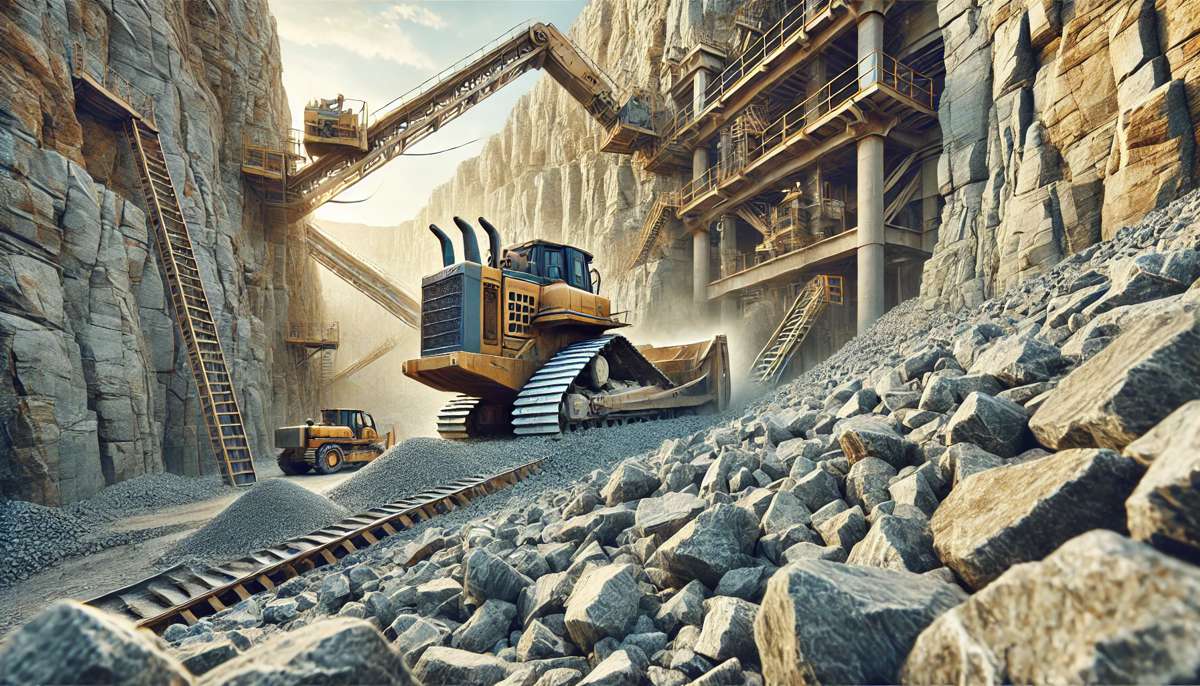
Equipment and Techniques
Drilling Rigs: Precision at the Core
Drilling rigs are essential for creating boreholes in the rock, allowing for controlled blasting. Modern rigs are equipped with GPS technology to ensure precision drilling, reducing waste and enhancing safety. Down-the-hole (DTH) drills are commonly used for hard rock formations, as they can penetrate deep and deliver high levels of accuracy. Rotary drills, on the other hand, are better suited for softer materials, providing faster and more cost-effective operations.
Blasting: Controlled Power
Blasting is a critical step in breaking apart rock efficiently. Operators use carefully calculated explosive charges to fracture rock into manageable sizes. Techniques such as sequential blasting reduce ground vibrations and minimize structural impact on nearby areas. Modern systems also incorporate micro-seismic monitoring to measure and adjust blast performance in real-time, enhancing both safety and efficiency.
Excavators and Loaders: Heavy Lifting
Excavators and loaders handle the massive task of removing fractured material and transporting it within the quarry. Hydraulic excavators offer precise control, making them ideal for delicate extractions such as dimension stones. Wheel loaders, with their speed and capacity, are indispensable for moving large volumes of aggregate quickly.
Crushers: From Boulders to Building Blocks
Crushers reduce large rocks into smaller, usable sizes. Jaw crushers perform the initial reduction by applying compressive force. Cone crushers provide further size reduction and are used to process secondary material. Vertical shaft impactors (VSIs) are often employed to produce finely shaped aggregates, meeting specific industry standards for concrete and asphalt production.
Conveyor Systems: Efficiency in Motion
Conveyor systems transport material across the site, streamlining operations and reducing the need for fuel-intensive trucks. These systems are often automated and designed to handle large volumes of material efficiently. Advanced monitoring systems ensure smooth operation and minimal downtime.
Screening Plants: Ensuring Quality
Screening plants separate materials by size, ensuring uniformity in the final product. Vibrating screens are commonly used, with adjustable settings to cater to different material specifications. High-quality screening minimizes waste and ensures that only the best materials reach the customer.
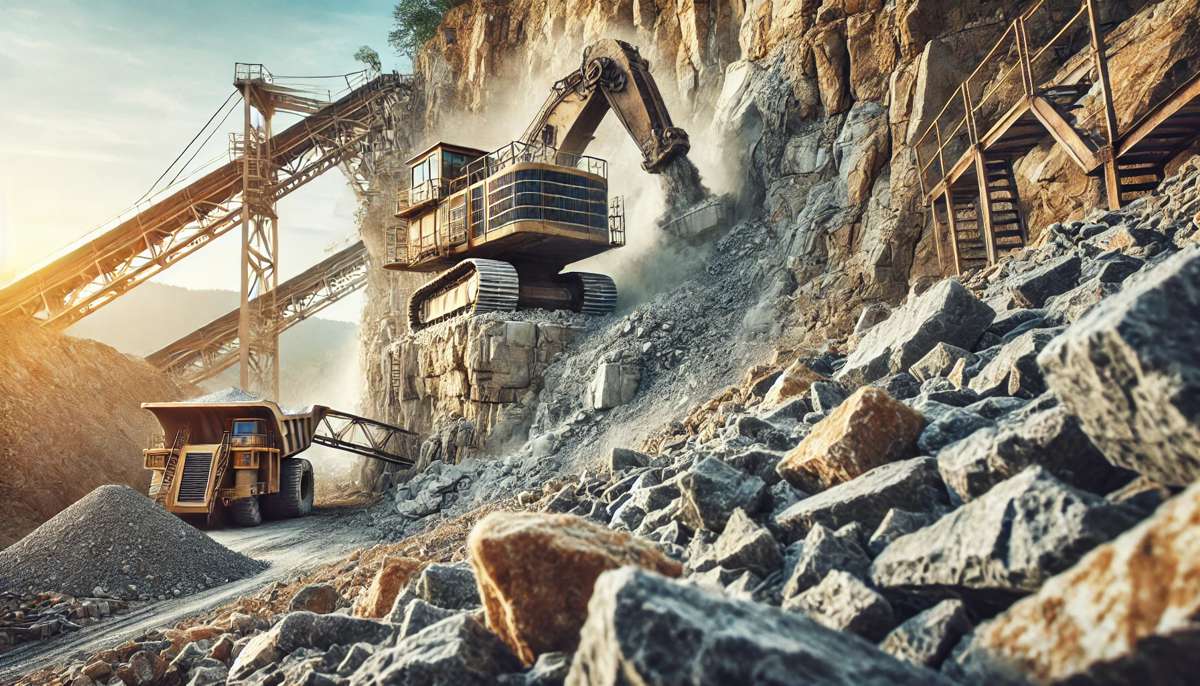
Regulatory Frameworks Governing Quarry Operations
Ensuring Worker Safety
Worker safety is paramount in quarry operations. Regulations such as the UK’s Quarries Regulations 1999 mandate comprehensive risk assessments and safety protocols. These include measures to prevent equipment accidents, training for workers on emergency procedures, and regular inspections to identify potential hazards.
Protecting the Environment
Environmental regulations address issues such as dust control, water management, and waste handling. Operators must implement systems to suppress dust emissions, often using water sprays or mist cannons. Water runoff from the site must be treated to prevent contamination of nearby water bodies, while overburden and other waste materials are managed to reduce their environmental impact.
Planning and Permitting
Obtaining planning permissions involves extensive consultation with local authorities and communities. Operators must present detailed plans outlining how they will extract materials responsibly, mitigate environmental impacts, and rehabilitate the site after operations cease.
Compliance Monitoring
Authorities regularly inspect quarry sites to ensure compliance with safety and environmental regulations. Operators are required to maintain records of their activities, including monitoring data for air and water quality, to demonstrate adherence to the law.
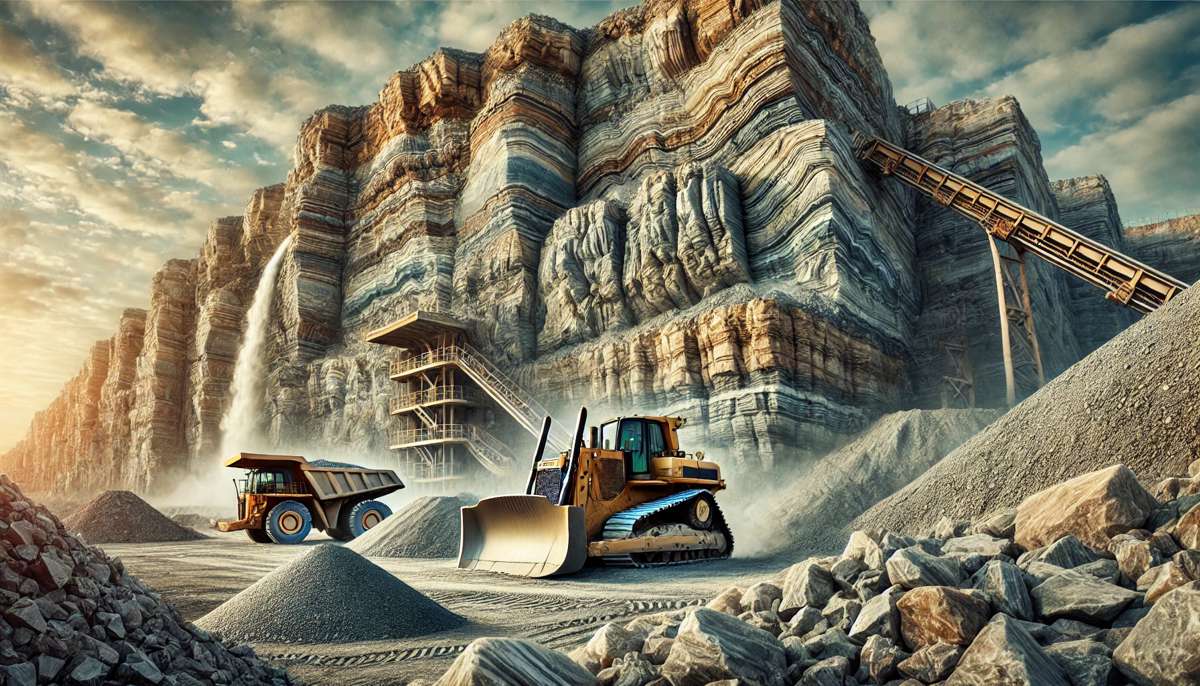
Environmental Impacts and Mitigation Strategies
Biodiversity Loss
The clearing of vegetation for quarrying disrupts ecosystems and threatens local flora and fauna. Mitigation strategies include phased extraction, where only sections of the site are cleared at a time, and post-extraction rehabilitation, which may involve replanting native vegetation or creating new habitats.
Water Pollution
Quarrying can lead to sediment runoff and chemical leaching, affecting nearby water bodies. To mitigate this, operators implement sediment traps, construct diversion channels, and monitor water quality regularly to ensure compliance with environmental standards.
Air Quality
Dust generated during extraction and processing poses risks to human health and ecosystems. Dust suppression technologies, such as spray systems and enclosures, significantly reduce emissions. Regular monitoring ensures that dust levels remain within permissible limits.
Noise Pollution
Quarrying equipment and blasting operations generate significant noise. Noise barriers and equipment modifications, such as mufflers, help mitigate these effects. Operators also schedule blasting during less disruptive times to minimize community impact.
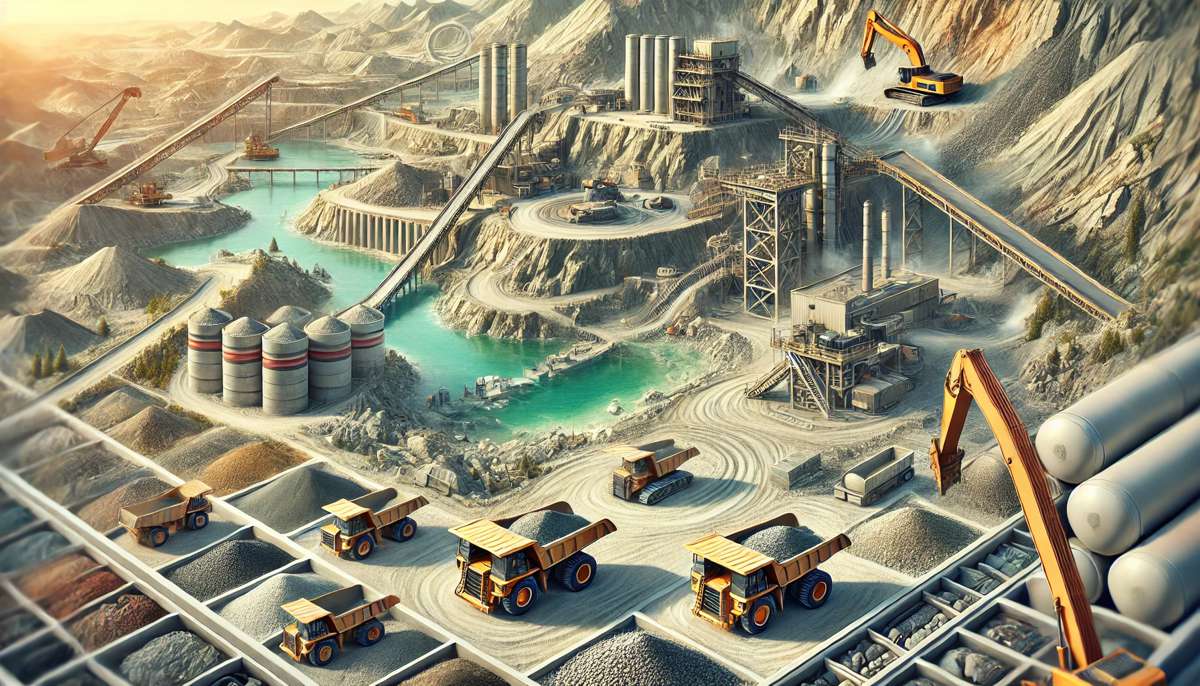
Future Trends in Quarrying
Quarrying is evolving rapidly, with advancements aimed at improving efficiency and sustainability. Automation and robotics, for instance, are reducing human exposure to hazardous conditions while enhancing precision. Data analytics provide real-time insights, enabling better decision-making. Renewable energy sources, such as solar and wind, are being integrated into quarry operations to reduce reliance on fossil fuels.
Recycling is also gaining prominence, with operators increasingly processing construction waste into reusable aggregates. These innovations not only improve the environmental profile of quarrying but also ensure the long-term viability of the industry.








